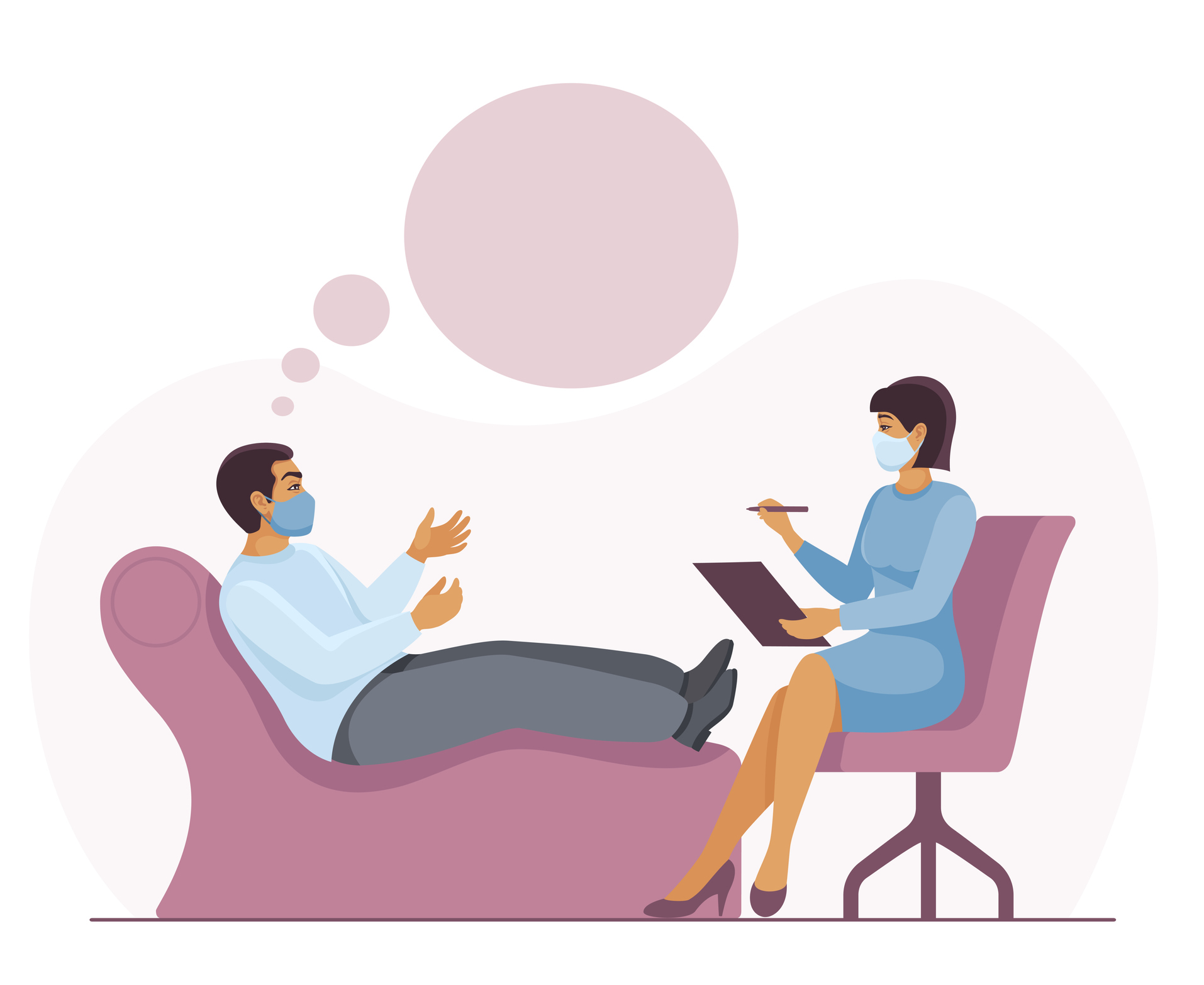
More Americans sought treatment for mental-health disorders during the COVID-19 pandemic than in past years, according to data from the National Center of Health Statistics published Sept. 7. The share of U.S. adults who either reported taking a prescription medication for a mental-health condition or receiving counseling or therapy rose from 19.2% in 2019 to 21.6% in 2021.
The biggest rise occurred among the youngest adults, ages 18 to 44. Nearly 19% of people in this age group received mental-health treatment in 2019, which rose to more than 23% in 2021. Other recent research has shown that younger adults were more likely than older people to experience mental-health symptoms during the first years of the pandemic; about 63% of people 18 to 24 reported symptoms of anxiety and depression in 2020, for instance, and more than 40% of adults ages 25 to 44 reported the same.
Young women were much more likely to receive mental-health treatment than young men. In 2019, nearly 24% of women (and 13% of men) ages 18 to 44 received mental-health treatment; those numbers grew to about 29% (and 18%, respectively) by 2021.
There were signs that women were already vulnerable prior to the pandemic, including a rising suicide rate among teenage girls and young women. The pandemic compounded existing stressors on young women’s mental health, says Rachel Donnelly, an assistant professor of sociology at Vanderbilt University (who was not involved in the study). “These additional stressors are falling particularly hard on mothers, especially young women,” Donnelly says. During the outbreak, they disproportionately bore the fallout from school closures, caregiving responsibilities, and job loss. “Who’s going to be responsible for homeschooling?” Donnelly says. “If your kid is sick or has to quarantine, who’s the parent that’s most likely to stay home with them?”
Read More: Pandemic Anxiety Is Fueling OCD Symptoms—Even for People Without the Disorder
To some extent, the increasing use of mental-health services may be a sign that more people in the U.S. who need this type of care are getting it. The pandemic opened up new ways for Americans to receive mental-health care, including telehealth. In March 2020, just 1% of outpatient visits related to mental health and substance use were conducted via telehealth; that number rose to 36% as of Aug. 2021, according to a Kaiser Family Foundation analysis published in March. Insurers including Medicaid also expanded coverage of telehealth mental-health services.
However, many people still aren’t receiving the mental-health care they need. The new data find that less than half as many Black, Hispanic, and Asian Americans ages 18 to 44 received mental-health care as white people in 2021, and there were relatively small increases in the number of people receiving care from 2019 to 2021: just a 1.1% increase among Hispanic people; 4.8% among Asians, and 2.4% among Black people. These numbers suggest unequal access, Donnelly says. For example, while telehealth was a boon to some people, it might not have been an option for people who don’t have high-speed internet access or a quiet room in which to talk to a therapist, she points out.
While research suggests that people of color—including Black, Hispanic, and Asian Americans—were more likely to experience harm to their mental health during the pandemic and the traumatic racially motivated killings that happened during it, the new data show that white people were more than twice as likely as people in other racial groups to secure mental-health care during the pandemic. The youngest group of white Americans studied experienced a 6.6% increase in care-seeking from 2019 to 2021. Young Black Americans, however, only saw a small 4.6% increase in 2020 compared to 2019, but the rate declined by 2.2% from that 2020 peak a year later.
People of color are especially likely to face structural barriers that make it harder to receive mental-health care, says Donnelly. They’re less likely to have paid time off and to receive health insurance from their employer, for instance, and they tend to have fewer economic resources. “We know that there are inequities in mental health—especially during the pandemic, which has had much more severe consequences overall for people of color,” Donnelly says. “There are a lot of structural barriers. It’s going to add up.”
More Must-Reads from TIME
- Cybersecurity Experts Are Sounding the Alarm on DOGE
- Meet the 2025 Women of the Year
- The Harsh Truth About Disability Inclusion
- Why Do More Young Adults Have Cancer?
- Colman Domingo Leads With Radical Love
- How to Get Better at Doing Things Alone
- Michelle Zauner Stares Down the Darkness
Contact us at letters@time.com